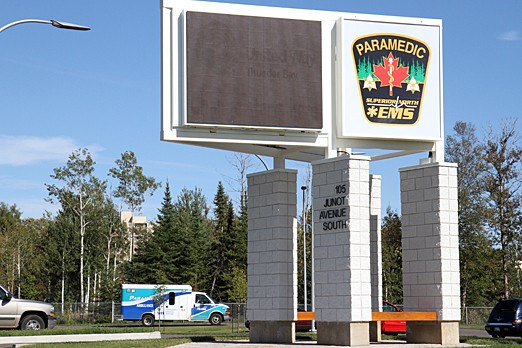For Superior North EMS, timing is everything.
That’s why the Thunder Bay and district emergency services established new time targets at city council Monday. The new time targets are to replace the 1996 90th percentile response time standards brought in by the province.
EMS would report its response times to the Ministry of Health and Long-Term Care for both the city and district then follow up with council each October for a review of the process.
EMS Chief Norm Gale said the previous method just didn’t work.
The EMS never reached the standard laid out by the province because the data used was unreliable, he said.
“There’s a number of reasons why it’s a problematic standard,” Gale said.
“Virtually all of our 911 calls are treated as life and death emergencies. This is a problem because they’re all lumped into one basket and our paramedics are being measured on their response to the vast of majority of those calls, which are indeed non-life-threatening and not time sensitive.
“Our paramedics know this and in affect don’t use a siren response on every call.”
Around 15 per cent of the calls taken in by 911 operators are life threatening. Gale said they are measuring the wrong things at the wrong time and is creating an inaccurate picture.
The previous measurement was an industry standard but the proposed targets by the city would be legislated.
The discussion was taken to a new level when Terrace Bay mayor Mike King from Terrace Bay and Red Rock mayor Gary Nelson can an update on their communities.
King said Thunder Bay would set new standards for time response measurement but voiced concerns about the rotating closures affecting not Terrace Bay’s response times but other Northern communities as well.
“The old standard is based on the fact there are four fully independent EMS stations that are fully staffed and operating at all times,” King said.
“Since 2008, that has changed. We now have rotating closures of EMS stations in Schreiber, Terrace Bay, Nipigon and Red Rock. This report is status quo on that and setting new standards on rotating closures.”
Since the rotating closures have taken affect, King said response times have dropped.
Around 35 per cent, paramedics are able to response in six minutes. But during those times when it’s a life-threatening emergency, it can take upwards of 30 minutes for an ambulance to respond in those communities.
He said that’s because the ambulance is responding from the neighbouring community because of those rotating closures.
King proposed to bring the staffing levels back to what was seen in 2008 for two years in order to get data to show response times could improve.
“My community has no ambulance for savings of $14,000 a year,” he said. “To return staffing levels to 2008 it is around $55,000 for all four stations combined. That’s what we would like. Give us two years of stats.”
Council directed administration to create a report on the $55,000 to bring up services levels for the four EMS stations in Nipigon, Red Rock, Schreiber and Terrace Bay.
Sign in or register
- Messages
- Post a Listing
- Your Listings
- Your Profile
- Your Subscriptions
- Your Likes
- Your Business
- Support Local News
- Payment History
Registered Users
Already have an account?
New Users
Create a free account.
